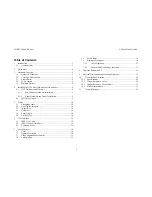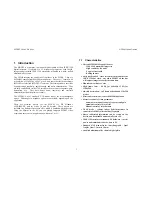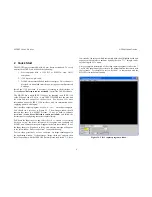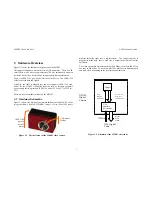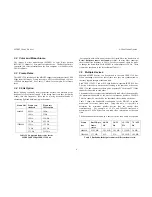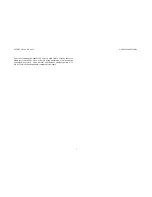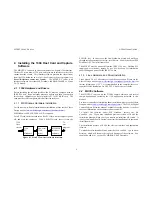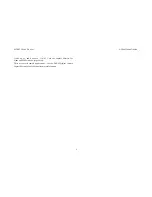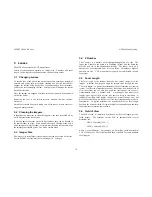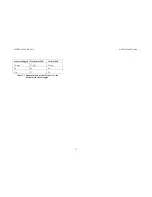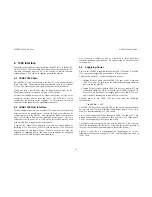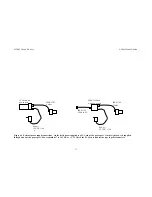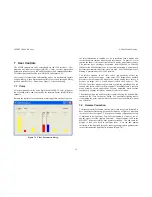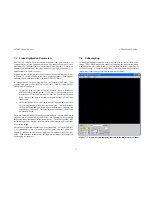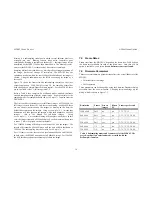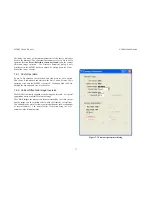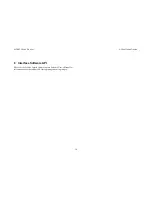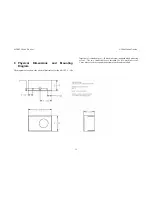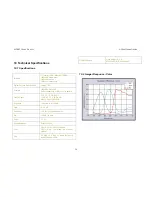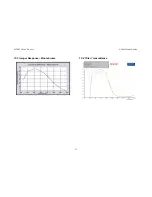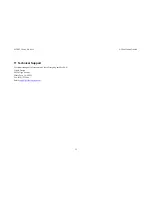
MDCS2
U
SER
’
S
M
ANUAL
©
2004
V
IDERE
D
ESIGN
10
5 Lenses
The MDCS2 uses standard C/CS mount lenses.
Lenses are characterized optically by imager size, F number, and focal
length. Following subsections discuss the choice of these values.
5.1 Changing
Lenses
To insert a lens, place it back end on the lens holder opening as straight as
possible, and gently turn it clockwise (looking down at the lens) until it
engages the threads of the lens holder. If you encounter a lot of resistance,
you may be cross-threading the lens. Forcing it on will damage the plastic
lens holder threads.
Once the threads are engaged, continue screwing it on until it snugs down
on the lens holder.
Removing the lens is the reverse process: unscrew the lens counter-
clockwise.
Normal care should be used in taking care of the lenses, as with lenses for
any good-quality camera.
5.2 Cleaning the Imagers
It should not be necessary to clean the imagers, since they are sealed off by
an IR filter inside the lens mount.
If dirt and dust are present on the IR filter surface, they can be cleaned in
the same manner as a lens. Wet a non-abrasive optic cleaning tissue with a
small amount of methyl alcohol or similar lens-cleaning solvent, and wipe
the imager glass surface gently. Dry with a similar tissue.
5.3 Imager
Size
The
imager size
is the largest size of imager that can be covered by the lens.
For the MDCS2, the lens must be for an imager 1/2” or larger.
5.4 F
Number
The
F number
is a measure of the light-gathering ability of a lens. The
lower the F number, the better it is at pulling in light, and the better the
MDCS2 will see in low-illumination settings. For indoor work, an F
number of 1.8 is acceptable, and 1.4 is even better. For outdoors, higher F
numbers are fine. C/CS mount lenses typically have adjustable iris and
focus rings.
5.5 Focal
Length
The
focal length
is the distance from the lens virtual viewpoint to the
imager. It defines how large an angle the imager views through the lens.
The focal length is a primary determinant of the performance of a camera
system. It affects two important aspects of the system: how wide a field of
view the system can see, and how good the resolution of the scene is.
Unfortunately there’s a tradeoff here. A wide-angle lens (short focal
length) gives a great field of view, but causes a drop in resolution. A
telephoto lens (long focal length) can only see a small field of view, but
gives better resolution. So the choice of lens focal length usually involves a
compromise. In typical situations, one usually chooses the focal length
based on the narrowest field of view acceptable for an application, and then
takes whatever resolution comes with it.
5.6 Field of View
The field of view is completely determined by the focal length, given a
fixed imager. The formulas for the FOV in horizontal and vertical
directions are:
)
/
328
.
3
arctan(
2
f
HFOV
=
)
/
496
.
2
arctan(
2
f
VFOV
=
where
f
is in millimeters. For example, a 6.0 mm lens yields a horizontal
FOV of 58 degrees. The following table shows the FOV for some standard
focal lengths.


